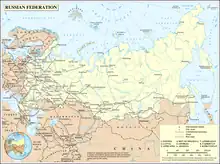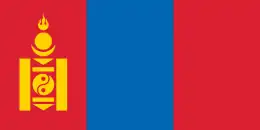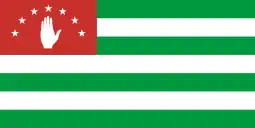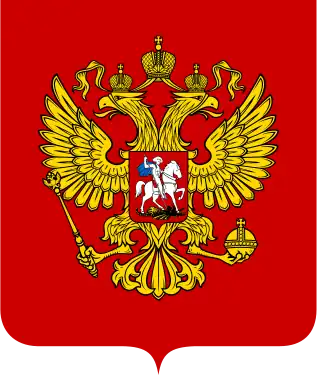_-_Crimea_disputed.svg.png.webp)
_-_Annexed_Territories_disputed.svg.png.webp)

The following outline is provided as an overview of and topical guide to Russia.
The Russian Federation, commonly known as Russia, is the most extensive country in the world, covering 17,075,400 square kilometres (6,592,800 sq mi), more than an eighth of the Earth's land area.[1] Russia is a transcontinental country extending across the whole of northern Asia and 40% of Europe; it spans 11 time zones and incorporates a great range of environments and landforms. With 143 million people, Russia is the ninth most populated country. Russia has the world's largest mineral and energy resources, has the world's largest forest reserves, and its lakes contain approximately one-quarter of the Earth's fresh liquid water.
General reference

- Pronunciation: /ˈrʌʃə/ ⓘ
- Common English country name: Russia
- Official English country name: The Russian Federation
- Common endonym(s): Россия (Rossiya)
- Official endonym(s): Российская Федерация (Rossiyskaya Federatsiya)
- Adjectival(s): Russian
- Demonym(s):
- Etymology: Name of Russia
- International rankings of Russia
- ISO country codes: RU, RUS, 643
- ISO region codes: See ISO 3166-2:RU
- Internet country code top-level domain: .ru, .su and .рф
Geography of Russia

- Russia is: a Country
- Location: transcontinental (lies in both Europe and Asia)
- Eastern Hemisphere
- Northern Hemisphere
- Time zones:
- Extreme points of Russia
- High: Mount Elbrus 5,642 m (18,510 ft) – highest point in Europe
- Low: Caspian Sea −28 m (−92 ft) – lowest point in Europe
- Land boundaries: 20,242 km (12,578 mi)[2]
 Kazakhstan 6,846 km (4,254 mi)
Kazakhstan 6,846 km (4,254 mi) China 3,645 km (2,265 mi)
China 3,645 km (2,265 mi) Mongolia 3,441 km (2,138 mi)
Mongolia 3,441 km (2,138 mi) Ukraine 1,576 km (979 mi)
Ukraine 1,576 km (979 mi) Finland 1,313 km (816 mi)
Finland 1,313 km (816 mi) Belarus 959 km (596 mi)
Belarus 959 km (596 mi) Georgia 723 km (449 mi), including:
Georgia 723 km (449 mi), including:
 Abkhazia 255 km (158 mi)[2]
Abkhazia 255 km (158 mi)[2] South Ossetia 70 km (43 mi)[2]
South Ossetia 70 km (43 mi)[2]
 Poland 432 km (268 mi)
Poland 432 km (268 mi) Latvia 292 km (181 mi)
Latvia 292 km (181 mi) Estonia 290 km (180 mi)
Estonia 290 km (180 mi) Azerbaijan 284 km (176 mi)
Azerbaijan 284 km (176 mi) Lithuania 227 km (141 mi)
Lithuania 227 km (141 mi) Norway 196 km (122 mi)
Norway 196 km (122 mi) North Korea 18 km (11 mi)
North Korea 18 km (11 mi)
- Coastline: 37,653 km (23,396 mi)[3]
- Population of Russia: 142,942,000 people (2010 census) – 8th most populous country
- Area of Russia: 17,075,400 km2 (6,592,800 sq mi) – 1st largest country
- Atlas of Russia
Mercator projection distorts Russia's appearance from crescent-like shape (as seen on a globe) into a fish-like or bear-like outline; also making the uninhabited area of Russia (e.g. food-less cold tundra and taiga) look 3-4 times bigger than it already is.
Environment of Russia

- Climate of Russia
- Environmental issues in Russia
- Ecoregions in Russia
- Renewable energy in Russia
- Geology of Russia
- National Parks of Russia
- Nature Reserves ("Zapovedniks") in Russia
- Ramsar Wetlands in Russia
- Protected areas of Russia
- Wildlife of Russia
Geographic features of Russia
- Fjords in Russia
- Glaciers of Russia
- Islands of Russia
- Lakes of Russia
- Caspian Sea (lake with 1.3% salinity, about a third the salinity of seawater. Compare with Great Salt Lake.)
- Mountains of Russia
- Plains of Russia
- Rivers of Russia
- Waterfalls of Russia
- Valleys of Russia
- World Heritage Sites in Russia










.jpg.webp)
